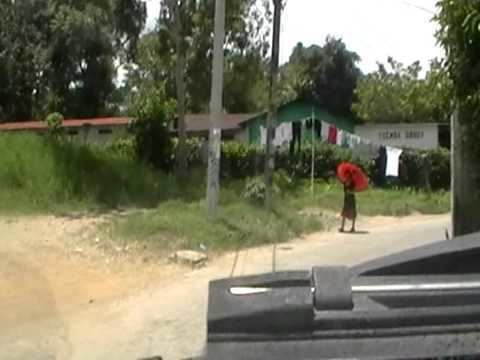Municipality Morales Elevation 75 m (246 ft) Area 1,295 km² | Creation municipality 1920-06-24 Climate Af | |
 | ||
Morales is a municipality in Izabal Department of Guatemala. The municipality was created in 1920 and is formed by the town of Morales, 9 villages and 56 rural communities. The Cuevas del Silvino National Park is located a few kilometers north-east of Morales.
Contents
- Map of Morales Guatemala
- Northern Railroad of Guatemala
- United Fruit Company
- Franja Transversal del Norte
- Sports
- Climate
- References
Map of Morales, Guatemala
Northern Railroad of Guatemala
On 22 November 1896 the Northern Railroad Zacapa, Zacapa-Puerto Barrios connection, was opened to the public; it was the most important infrastructure project of general José María Reina Barrios given the economic crisis the loomed over Guatemala if he was not able to finish the railroad on time for the Central American Expo schedule for March 1897. The new line would had one hundred and one miles. In those days, the Northern region of Guatemala was practically a new and unexplored area, a newfound place where natural resources could be exploited and the railroad construction finally gave way to the commercial and industrial exploration of the area. The complete line Puerto Barrios-Guatemala City -through Panajax- had one hundred and ninety seven miles and was built in stages (which later became train stops): from Puerto Barrios to Tenedores -in Morales-, eighteen miles; from Tenedores to Los Amates, forty one miles; from Los Amates to Gualán, twenty one miles; from Zacapa to El Rancho de San Agustín, thirty four miles; from El Rancho to Panajax, thirty miles; and finally, from Panajax to Guatemala city, thirty two miles.
United Fruit Company
In early 1920, after the Unionist party deposed Manuel Estrada Cabrera, the United Fruit Company -which had received considerable concessions from the Guatemalan president in the past two decades in Izabal- was suddenly confronted with a large strike and did not have the help from the government to repress it due to the fighting taking place in Guatemala City. New labor chapters opened both in Morales and Los Amates banana plantations, while Puerto Barrios had more than 250 members. The strike grew stronger and upon the resistance of the Unionists to help it, UFCO supported a coup d'état led by general José María Orellana in 1921, who swiftly repressed the union members and gave tranquility to the United Fruit Company operations in Izabal.
Franja Transversal del Norte
In the 1960s, the importance of the region known as Franja Transversal del Norte was in livestock, exploitation of precious export wood and archaeological wealth. Timber contracts we granted to multinational companies such as Murphy Pacific Corporation from California, which invested US$30 million for the colonization of southern Petén and Alta Verapaz, and formed the North Impulsadora Company. Colonization of the area was made through a process by which inhospitable areas of the Franja Transversal del Norte (FTN) were granted to native peasants.
In 1964, the National Institute for Agrarian Transformation (INTA) defined the geography of the FTN as the northern part of the departments of Huehuetenango, Quiché , Alta Verapaz and Izabal and that same year priests of the Maryknoll order and the Order of the Sacred Heart began the first process of colonization, along with INTA, carrying settlers from Huehuetenango to the Ixcán sector in Quiché.
The Northern Transversal Strip was officially created during the government of General Carlos Arana Osorio in 1970, by Decree 60-70 in the Congress, for agricultural development. The area included within the municipalities: San Ana Huista, San Antonio Huista, Nentón, Jacaltenango, San Mateo Ixtatán, and Santa Cruz Barillas in Huehuetenango; Chajul and San Miguel Uspantán in Quiché; Cobán, Chisec, San Pedro Carchá, Lanquín, Senahú, Cahabón and Chahal, in Alta Verapaz and the entire department of Izabal.
Sports
The town boasted a Guatemalan top division football side in Deportivo Heredia before it was relocated to San José, El Petén Department in summer 2008 due to a lack of support.
Climate
Morales has a tropical rainforest climate (Köppen: Af) and its municipal capital is 48 m above sea level.
